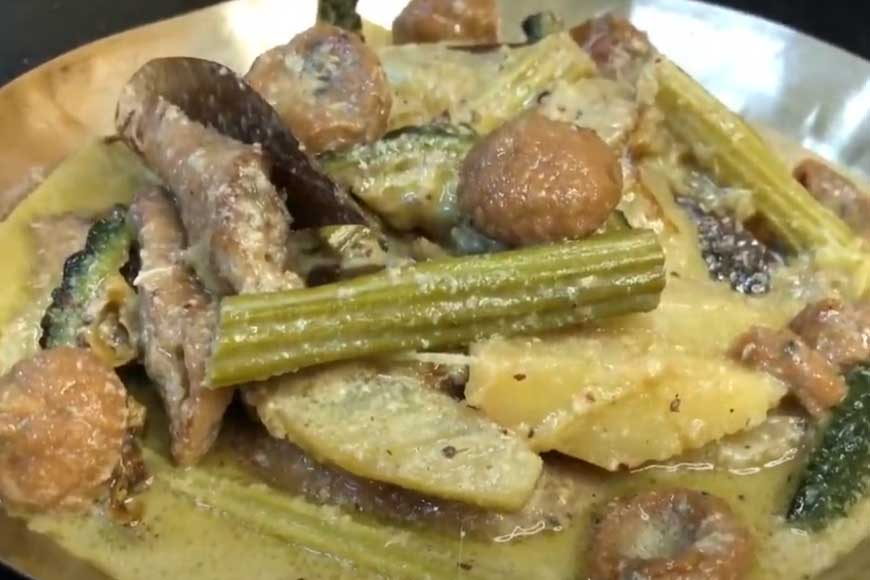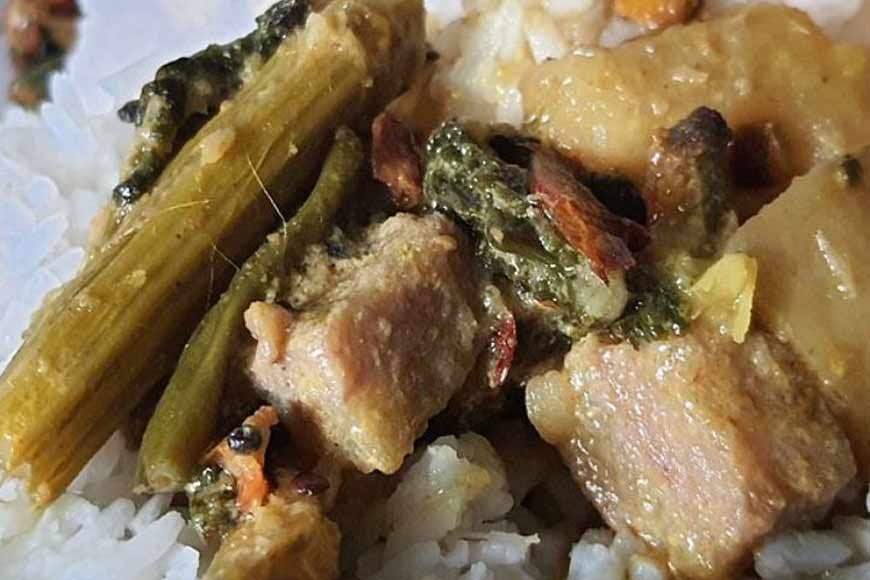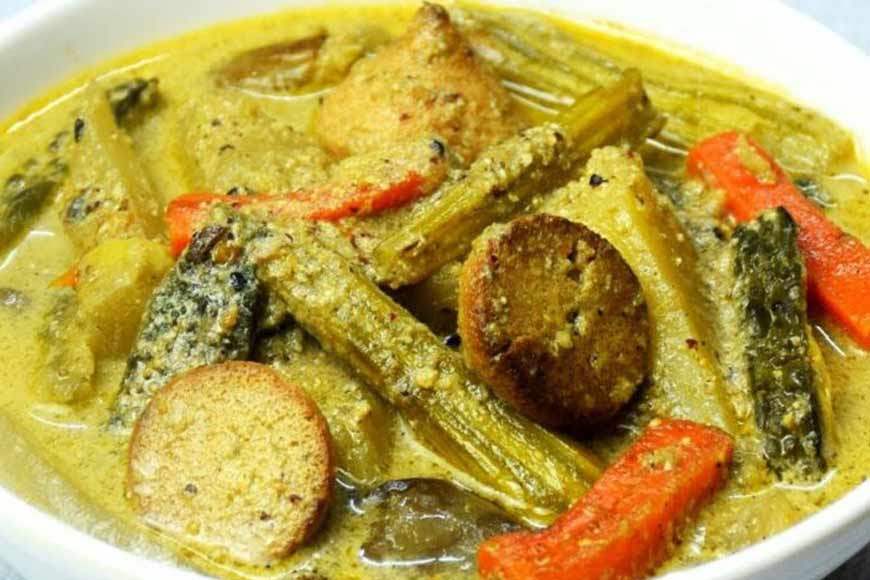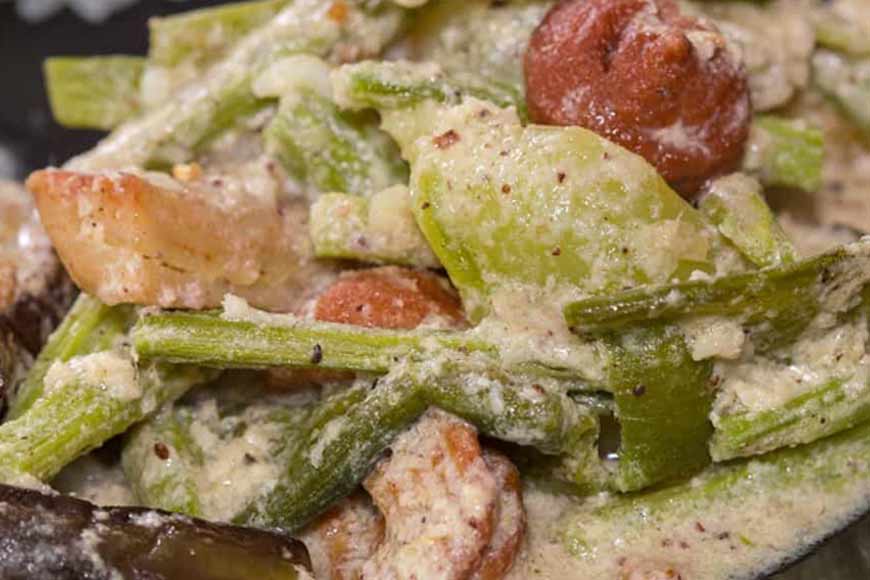Shukto, Bengal’s ancient stew, makes a comeback – GetBengal story

Bengali shukto is a mild, comforting stew packed with a variety of vegetables like potatoes, sweet potatoes, karela, green bananas, raw papaya, brinjal, and drumsticks. This dish has recently garnered attention for its medicinal properties. Although the dish is not as popular as other Bengali staples, it is a powerhouse of nutrients and packed with healthy benefits. Shukto is considered to be an ideal food for a patient recovering from any ailment.
Shukto may not sound very exciting, as it is essentially a light, non-spicy gravy filled with vegetables, but this is a misconception. Shukto is an age-old recipe referenced in many scriptures, and homogenising this dish is problematic. Every household has a unique shukto recipe. Even non-vegetarian versions of the dish exist. Every variation still acts as an appetiser. Subhojit Bhattacharya, the man behind the food history channel ‘Lost and Rare Recipes,’ said, “I love looking meticulously into lost and rare recipes and recreate them in an attempt to immortalise those recipes online. As for Shukto, there is no one way to cook this delectable dish.”

As Bhattacharya says, shukto varies slightly from region to region. Ranjini Guha, an author and food historian, cites several ancient texts where shukto or shukto-like dishes are mentioned. “Shukto" is derived from the word shukuta, which means dried leaves of a bitter juice plant. Several texts, like Mangal Kavya and the autobiographies of Sri Chaitanya, refer to shukto. In one of the episodes of Chandi mangal kavya, Khullana cooks shukto with eggplants, pumpkin, raw bananas in ghee tempered with cumin, and fenugreek seeds for her husband, Dhanapati. A rice flour slurry was added to thicken the gravy. Chaitanya Charitamrita mentions shukuta made from jute leaves. A gravy made with dried neem leaves also finds mention. Compared to these texts, a more recent mention is by Pragyasundari Devi from the Tagore household, who added sugar, a slurry of flour, and milk to shukto, thus symbolising the cosmopolitanism of the Tagore kitchen,” says Guha.
Bhattacharya even busts the myth of Shukto being bitter. “Some shukto recipes are not bitter at all, like Lau Shukto, Jinghe Shukto, etc. Maacher Laal shukto is cooked with fish and is slightly spicier. Bhanga chora shukto is a non-vegetarian variety cooked by Bangladeshi Hindus using the head of a fish.”

Shampa Dutta, a home chef who owns a cloud kitchen named Shara’s Hensel, says: “Client response to shukto is not bad. My daughter loves non-veg shukto and is a picky eater. The process of making shukto is lengthy, so I understand that the present generation does not have the time to cook and prefers things that are available faster. I do receive frequent orders of shukto from mostly Bengali customers, and in a week, I cook shukto two-three times a week. So, I’d say the dish is quite in demand even today.”
Ranjini Guha points out: “It is not merely a recent recipe with no historical significance. It existed before in different forms and under different names. Mangal kavyas are texts written in mediaeval Bengal, and since they are a collection of oral tales in written form, naturally these tales existed long before they were written. This justifies the existence of shukto as shukuta or possibly other names in different forms and recipes.”

Bhattacharya further elaborates on the various health benefits of shukto. “Shukto is an appetiser. It is easy on the stomach and boosts appetite. Since it has a lot of vegetables, it is very healthy and easy to digest. There is no one way to cook shukto, and one can use any vegetables to cook it. It is versatile in nature and can be cooked with non-vegetarians too, which adds to the benefits of the already-present vegetables. It uses healthy spices like methi, posto, shorshe, etc., which add aroma and a subtle flavour to the dish. Overall, it is very healthy and can be consumed by everyone.”
While shukto may not be cooked at homes as frequently, that does mean that demand for shukto has gone down as it is deeply connected to Bengal. Despite shukto dying as an appetising delicacy, the recipe itself will surely survive the waves of time.










